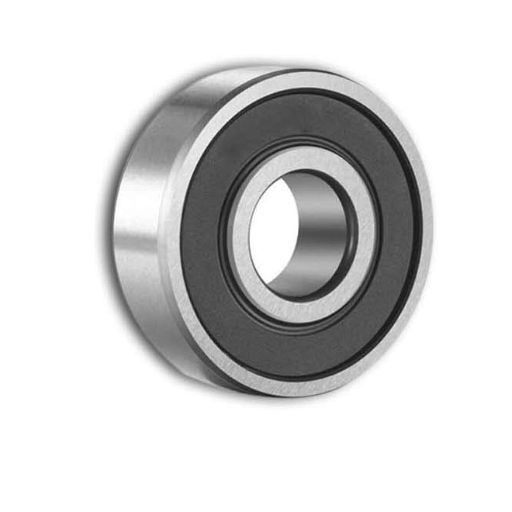Your vehicle’s water pump plays a critical role in maintaining optimal engine temperature by ensuring the effective circulation of coolant. At the heart of the water pump lies the bearing, a small but essential component that enables smooth operation and minimizes friction. However, when the water pump bearing begins to fail, it can set off a chain reaction of mechanical issues, potentially jeopardizing your engine’s health. Recognizing early signs of a failing water pump bearing is crucial to avoiding costly repairs and ensuring your vehicle’s reliability. This guide outlines the most common symptoms to watch for, explaining their technical implications and why timely action is vital.
What are the common symptoms of a failing water pump bearing?
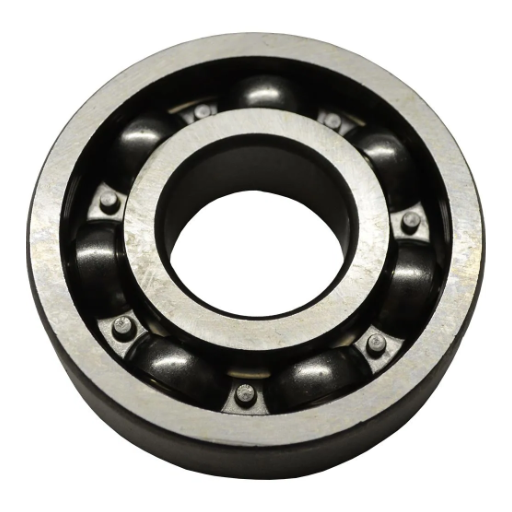
Coolant leaks and their connection to bearing failure
A leaking coolant is a sign that the bearing of either the water pump is failing. Most of these leaks appear as a result of seal degradation of the water pump. Even the slightest misalignment or excessive wear of the bearing within the pump will directly influence these leaks. Defective bearings cause rotation imbalances of the pump which leads to excessive force on the seals which leads to coolant leakage from the pump housing.
- Seal wear rate: Referred to as surface wear, this can be measured in micrometers per service hour for a defective bearing. It has been found that the wear rates on the seals are higher than usual and the threshold of 1-3 micrometers/hour set for the design of the vehicle is surpassed.
- Operating temperature: Uncontrolled friction due to a worn-out bearing can raise the operating temperatures beyond the pump’s best-design working temperature which is normally 80 to 110 degrees celsius.
- Coolant pressure loss: The internal cooling liquid of a car engine must be maintained within a pressure of not less than 0.05Mpa, and doesn’t exceed 12-16 psi. System pressure lower than these limits can support the idea that the bearing has some issues.
Timely identification of leaks and inspection of the corresponding technical parameters can prevent further mechanical damage. Regular maintenance and professional diagnostic tests are essential to ensuring the longevity of your water pump system.
Vibrations and wobbling of the water pump pulley
The vibrations or shudders of an oscillating water pump pulley show there are problems with the alignment or wear-and-tear of the system. To address this issue in the most adequate manner, I propose looking into the following factors:
- Pulley Alignment: Determine if the pulley properly sits on the belts without any deviations. If not corrected, the misalignment may lead to vibrations and further excess wear. Make the necessary corrections, or change all the components that sit out of place.
- Belt Tension: Adjust the belt tension as per the specifications of the manufacturer. Loose belt tension will result in slippage; on the contrary, over-tightened belts will cause malfunction to the bearings and the pulley.
- Bearing Condition: The water pump bearings should be checked for any wear and looseness. Bad bearings will cause the pulley to shake or even vibrate.
- Axial and Radial Movement: Determine the axial and radial movement of the pulley. The preferred limit of axial motion is 0.2mm, and radial motion is 0.1mm.
Resolving the issue promptly will not only minimize the risk of mechanical failure but also maintain overall system efficiency.
How long does a water pump bearing typically last?
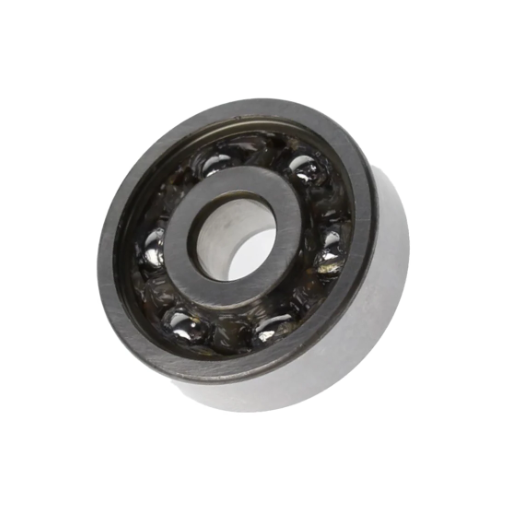
Factors affecting water pump bearing service life
The operating condition of a water pump bearing, such as load differences, lubrication quality, and even the environment have an impact on the service life of the appliance. Firstly, if loading is excessive or uneven, it will bear unneeded loads and strain, which will lead to faster wear and tear. It is important to stick to the recommended load values for the pump so these problems do not occur.
Secondly, inefficient lubrication is another challenge. I recommend the use of high-grade lubricant oils with a suitable viscosity index at the listed temperatures and speeds. Poor or insufficient lubrication can cause overheating and increased friction which will shorten the lifetime of the bearing.
Moreover, the environment can pose a risk if the bearing surface gets infiltrated by debris, dirt, or moisture. I always make sure that the sealing devices are in good shape to avoid such contamination. Bearings usually last within their life expectancy if the operating temperature does not go beyond 130°F (55°C) and vibration intensity is within limits – typically less than 25 microns for industrial systems.
By maintaining optimal conditions and adhering to these factors, you can prevent premature failures and achieve the expected lifespan of most water pump bearings, which is typically between 50,000 and 75,000 miles for automotive applications or several thousand operating hours in industrial systems.
The average lifespan of water pump bearings in different vehicles
Whether a water pump operates in a passenger car or heavy-duty truck, its bearings will have a slewing lifespan that depends on factors like the vehicle type and the operating conditions; more importantly, regular maintenance practices also play a considerable role. While the general use driving range for passenger cars is estimated between 50,000 to 100,000 miles on the low end, harsh terrain and extreme environments like dusty places or high heat can further warp these figures.
The same holds for almost every heavy-duty truck; however, most of them are built with stronger components. Provided the manufacturer’s explicit instructions on maintenance are followed, and the cooling system is not contaminated, the water pump bearings can last anywhere between 150,000 to 250,000 miles.
For performance or racing vehicles, the lifespan may be considerably shorter due to the systems operating under higher stress and temperatures. These vehicles may require inspection and replacement after as little as 20,000 to 40,000 miles, depending on usage intensity.
No matter how a vehicle is used, one must always follow the recommendations of the water pump manufacturer. Making regular checks of the coolant levels and examining the conditions of the pump should significantly reduce premature wear on the parts.
Can you replace just the bearing in a water pump?
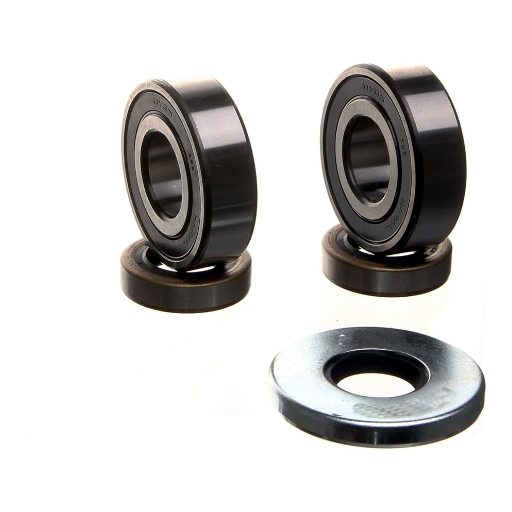
Pros and cons of replacing only the bearing
From my experience, replacing just the bearing in a water pump can be a cost-effective solution, but it does come with some critical considerations. Here’s a breakdown of the pros and cons to address this question:
Pros:
- Cost Reduction: Usually, only the bearing that is broken is replaced which is significantly cheaper than replacing the whole water pump assembly that includes the pump housing and other ancillary components.
- Material Reduction: Just replacing the bearing on the water pump leads to a significant reduction in material wastage if the remaining assembly is still in good condition.
- Targeted Repairs: It saves time because If the water pump housing as well as the impeller are in working condition, instead of bearings, they can replace other parts ensuring optimal functioning without wasting time.
Cons:
- Skill Level: Special tools and abilities are required to disassemble the pump, take out the defective bearing, and press a new one. A faulty one could lead to misalignment or failure.
- Component Wear: Replacing the bearing is a risk on its own. The risk becomes greater if other internal parts including the shaft or seals have worn out due to long use. A detailed examination of these parts is highly recommended.
- Labor Hours: The cost of labor incurred in the removal and replacement of the bearing along with the pump’s reassembling process may balance any savings made while purchasing parts especially when a service technician is engaged to do the work.
All in all, it is possible to replace an old or damaged bearing alone. However, careful consideration of the technical aspects and the state of all associated parts is needed to perform an efficient repair.
When to consider a complete water pump replacement
When assessing whether to replace the entire water pump, I focus on several technical to ensure a reliable solution:
- Severe Component Damage: Shattering damage to the shaft, heavy corrosion on the impeller, or cracks on the housing means I need to get the entire assembly replaced. Certain component-level repairs can only do so much and if the structural integrity is compromised, as in the case of corrosion or cracking of the pump housing, the entire assembly needs to be replaced.
- Recurrent Failures: If the pump continues to have operational issues like excessive leaking or cavitation, there is a good chance that replacing the pump altogether is more efficient than doing incremental repairs that will only address parts of the problem.
- Operational Efficiency: Aged water pumps tend to lose operational efficiency and if impairments to performance measurement, say flow rate (GPM) or head pressure (PSI), are excessive, and are considerably below standard operating parameters, investing in a replacement pump is the best investment.
- Cost Analysis: There is a lot of behind-the-scenes work that goes into a cost analysis. In this case, I will compare the labor and parts cost of individually replacing each component, against, the cost of a new pump itself. If the lifetime cost of repairs ends up being greater than 70 – 80 percent of the total cost of a replacement, getting a replacement becomes the most viable option.
- System Compatibility: In newer systems, I investigate features such as compliance with new regulations and improved energy-efficiency standards in modern pumps. This might include the incorporation of enhanced materials for seals or other components to maximize the operational life of the pump.
Taking such factors into consideration makes it easier to decide whether entirely replacing the water pump would be a preferred solution.
How can I extend the life of my water pump bearing?
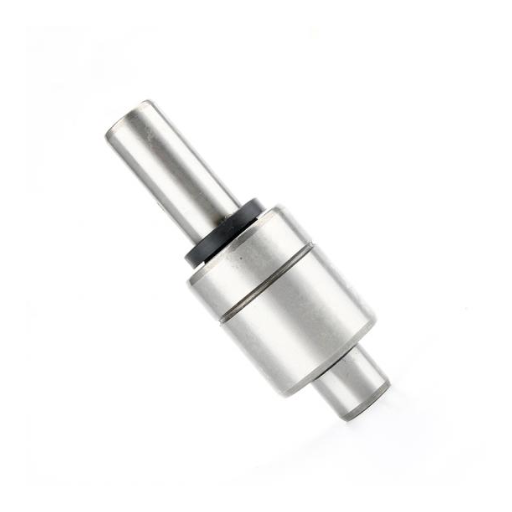
Proper maintenance tips for water pump bearings
To prolong the lifespan of your water pump bearings, I focus on these major maintenance activities:
- Routine Servicing: I always make certain that the bearing is periodically serviced to avoid excessive wear and heating. It is very important to follow the manufacturer’s guidelines on the type of lubricant to use and the maintenance servicing schedule. Use of lubricant above or below the required levels is detrimental as it leads to ineffective lubrication which speeds up failure of machinery components such as bearings.
- Alignment Checks: I conduct routine checks on the alignment of both the motor and pump shafts. Misalignments cause excessive stress on the bearings. I measure the alignment using a dial gauge or a laser alignment tool, which I set the tolerances for at ±0.002 inches where it is possible to do so.
- Operating Conditions Monitoring: I monitor varying vibration levels, noise, and operating temperatures. Ideally, the water pump bearings should work within the limits set by the manufacturers say between 60°F and 150°F to avoid thermal issues.
- Contamination Prevention: I actively monitor the seals on the bearing housing to ensure that they are not permitting the entry of water, dirt, or debris. Periodic inspection of seals and immediate change of seals that have been damaged is a must.
- Overloading Prevention: I confirm that the pump is within its designed flow rate and pressure settings to curtail any possible overloading of the pump. Stressing the pump past its working limit increases the forces applied to the bearings, causing it to fail sooner than expected.
When such maintenance practices are observed and the technical specifications are followed, I can increase the service life of the water pump bearings and decrease the probability of unplanned failures.
The importance of using quality coolant
Using a high-quality coolant is essential to maintaining the performance and longevity of water pumps and their components. I consistently utilize coolant that meets the manufacturer’s specifications to minimize corrosion, avoid scaling, and ensure proper heat transfer. Poor-quality or improperly mixed coolant can lead to clogging in the cooling system, reduced efficiency, and premature wear of internal components, including pump bearings and seals.
- Corrosion Protection: Certain coolant types are selected to have a higher concentration of inhibitors, Nitrites, phosphates, or silicates to protect the aluminum or steel parts of the cooling system from corrosion.
- Freezing and Boiling Points: I make sure the correct mixture which is 1:1 deionized water and coolant is used so that the freezing point is kept lower than 34 degrees and the boiling point is maintained above 265 degrees. This guarantees dependable operation in harsh conditions.
- pH Levels: The appropriate level of coolant for pH is 7.5 to 11, this range makes sure materials and seals in the pump system are protected from the degradation that occurs due to acidity over time.
- Compatibility: The coolant should be effective against the various materials that make up the pump and the engine itself so that the possibility of negative chemical reactions and breakdown, leading to undesired deposits is eliminated.
- Regular Replacement: I adhere to the coolant replacement intervals as specified by the equipment manufacturer, as coolant properties diminish with time and use.
With these guidelines, I can achieve peak pump performance while also minimizing the chance of expensive breakdowns or system inefficiencies.
What happens if a water pump bearing fails?
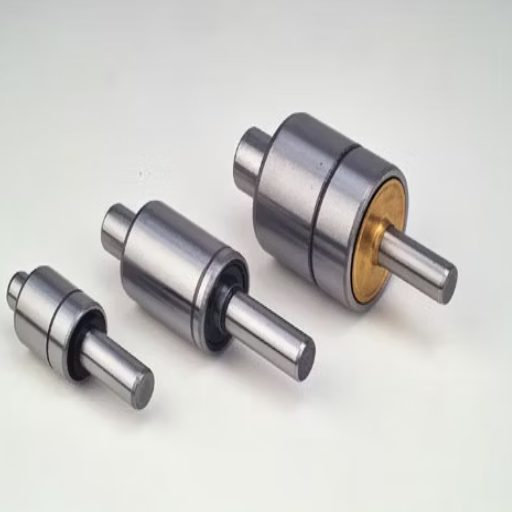
Potential damage to other engine components
If the bearing of a water pump fails, it can have drastic implications on the engine. To elaborate on that further, the malfunction might lead to the water pump impeller getting stuck which starves the coolant and ultimately results in the engine temperature rising excessively. When the temperature exceeds the allowed range, critical parts such as the cylinder head, block, and gaskets experience thermal damage. Secondly, a water pump pulley could have an excessive gap which could result in damage to the serpentine as well as a timing belt system. This, in turn, affects the auxiliary systems i.e. alternator failure or even the power steering pump. Finally, if the water pump is driven by a timing belt, it will increase the risk of overwhelming destruction of the given components. An example of this would be a crankshaft and camshaft becoming out of sync.
- Overheating Threshold: Most engines operate optimally between 195°F and 220°F. Exceeding this range can result in material expansion and warping of components.
- Belt Tension Loss: If the bearing gets jammed, the bearing tension loosens. This is a critical matter as it can result in re-tensioning the way the manufacturer intended. Typical amounts lie between twenty, 20, and thirty, 30 pounds for serpentine belts.
- Thermal Expansion Coefficients: The distortion of materials such as aluminum and cast iron in an engine block is heightened when components are in an overheated state.
Along with the evaluations and fixes made during the inspection, if these factors are considered, the chance of the water pumps failing can be significantly reduced. Proper checking and following the instructions given by the manufacturer can result in no collateral damage to the entire system.
Risks of overheating and engine breakdown
When an engine’s temperature begins to rise above the normal threshold, there is a chance that the engine will fail. The prolonged overheating can lead to stem failure with blown gaskets and loss of compression which ultimately leads to misfire, power output reduction, and complete engine shutdown.
- Thermal Fatigue: Materials like aluminum require proper care after reaching the stage of structural integrity loss, which happens to them right around 250°F. If enough care is not taken, materials will start deforming and cracking.
- Coolant System Overpressure: An overheating engine increases the pressure of the coolant system which is already supposed to be in the range of 15-18 PSI. This increase in pressure can lead to the rupturing of hoses or damage to the radiator.
- Oil Viscosity Breakdown: Engine oil is deemed effective when in a temperature range of 180°F and 210°F. Oil beyond that range weakens the lubricating and protective capabilities, worsening engine wear.
- Piston Expansion: Design boundaries are set for a reason. When pistons made of aluminum alloy exceed the boundaries, they expand beyond tolerable limits. In worse case scenarios, temperatures exceed 400°F which then leads to the scuffing of cylinder walls and the engine completely seizing up.
By adhering to prescribed operating temperature ranges, per manufacturer specifications, and ensuring timely maintenance of cooling systems and sensors, the risks associated with overheating can be mitigated.
Frequently Asked Questions (FAQs)
Q: What are the common signs that a water pump bearing is going bad?
A: Common signs of a bad water pump bearing include unusual noises like squealing or grinding, coolant leaks, overheating engine, and visible play or wobble in the water pump shaft. If you notice any of these symptoms, it’s important to have your car checked by a mechanic as soon as possible to prevent further damage to the engine.
Q: How does a water pump shaft relate to bearing failure?
A: The water pump shaft is directly connected to the bearings. When the bearings start to fail, it can cause the shaft to wobble or become misaligned. This misalignment can lead to increased wear on the bearings, seals, and other components, potentially causing coolant leaks and reduced pump efficiency.
Q: Can a bad water pump bearing cause engine overheating?
A: Yes, a bad water pump bearing can indeed cause engine overheating. When the bearings fail, the water pump may not function properly, leading to inadequate coolant circulation. This can result in high engine temperatures and potential damage to various engine components, including the head gasket.
Q: How long does a typical water pump bearing last?
A: The bearing life of a typical water pump can vary depending on factors such as vehicle make, model, and driving conditions. On average, water pump bearings can last anywhere from 60,000 to 100,000 miles. However, it’s important to monitor your vehicle for any signs of bearing wear and replace the water pump if necessary, even before reaching these mileage milestones.
Q: Is it possible to replace just the bearings in a water pump?
A: While it is technically possible to replace just the bearings in a water pump, it’s generally not recommended. Most mechanics and automotive experts suggest replacing the entire water pump assembly. This ensures all components are new and properly matched, reducing the risk of future failures. Additionally, the labor cost to replace just the bearings often makes it more cost-effective to install a new water pump.
Q: How can I differentiate between a bad water pump bearing and other engine noises?
A: A bad water pump bearing often produces a distinct squealing, grinding, or rumbling noise that changes with engine speed. This noise is typically more noticeable when the engine is cold and may become louder as the problem worsens. To differentiate it from other engine noises, you can try to isolate the sound by using a mechanic’s stethoscope or a long screwdriver placed against the water pump housing while the engine is running.
Q: Does car insurance cover water pump bearing replacement?
A: Generally, standard car insurance doesn’t cover water pump bearing replacement or other mechanical failures. These issues are typically considered regular wear and tear or maintenance items. However, if you have an extended warranty or mechanical breakdown insurance, it might cover such repairs. It’s always a good idea to compare rates and coverage options from different insurers to find the best protection for your vehicle.
Q: Can a failing water pump bearing damage other engine components?
A: Yes, a failing water pump bearing can potentially damage other engine components. If left unaddressed, it can lead to complete water pump failure, causing overheating and possible damage to the engine block, head gasket, or other critical parts. Additionally, if the bearing failure causes the water pump shaft to become misaligned, it may damage the timing belt (in engines where the timing belt runs the water pump) or other nearby components like the alternator or air conditioning compressor.

